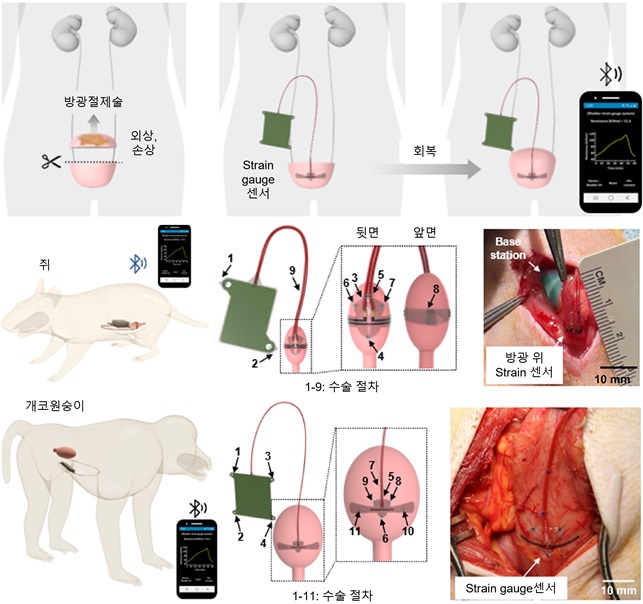Professor Kyeongha Kwon’s Research Team Develops a Bioelectronic System for Monitoring Bladder Function After Surgery Using Electronic Sensors

*A catheter is a thin tube made of rubber or metal that is inserted into the bladder.
The research team led by Professor Kyeongha Kwon from the School of Electrical Engineering at KAIST announced on the 16th that they have developed digital healthcare technology that accurately measures the size and pressure changes of the bladder through joint research with Dr. Jihye Kim from Northwestern University in the United States.
Partial cystectomy* requires a long recovery period, during which the urinary tract’s ability to expel urine externally is intermittently assessed through urodynamic studies** (UDS). However, UDS is not patient-friendly, results can vary among users, and it is limited in its ability to collect continuous data. Furthermore, it can lead to the risk of catheter-associated urinary tract infections and, in high-risk patients, can progress to ascending pyelonephritis. As an appropriate alternative to UDS, there is a need for technology that can continuously and in real-time monitor the condition of the bladder without the insertion of a catheter.
*Partial cystectomy: A surgery that involves cutting out the tumor-bearing part of the bladder and stitching the rest of the bladder back together.
**Urodynamic studies: Diagnostic tests to assess the overall function of the bladder and urethra to plan treatment.
In response, the research team developed an implantable bladder platform that can wirelessly remotely measure mechanical deformation changes related to bladder filling and emptying. This system uses biodegradable strain sensors to measure the size and pressure changes of the bladder in real-time, and the sensors naturally dissolve and disappear within the body after the recovery period. This eliminates the need for additional surgery to remove the monitoring equipment, reduces the risk of complications, and improves patient comfort and recovery time.

Professor Kyeongha Kwon said, “Through extensive experiments using non-human primates (marmosets), we have demonstrated the efficacy of a device that provides accurate and reliable data on bladder function,” and added, “This can be used to shorten patients’ recovery time and improve overall surgical outcomes.”
The results of this study were published in the ‘Proceedings of the National Academy of Sciences (PNAS)’ on April 2nd. (Article title: A wireless, implantable bioelectronic system for monitoring urinary bladder function following surgical recovery, link: https://www.pnas.org/doi/abs/10.1073/pnas.2400868121?af=R)
This research was conducted with the support of the Basic Research Program, the Regional Innovation Lead Research Center Project, and BK21 funded by the Ministry of Science and ICT and the National Research Foundation of Korea.